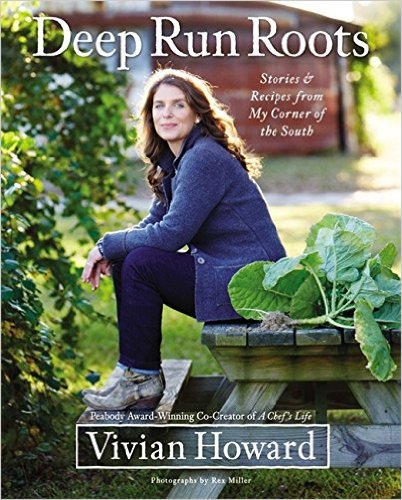An Interest In:
Web News this Week
- April 4, 2024
- April 3, 2024
- April 2, 2024
- April 1, 2024
- March 31, 2024
- March 30, 2024
- March 29, 2024
Boing Boing's 2016 Book Guide

When we got to rounding up our favorite books for our annual Gift Guide, we found that there were simply too many this time to throw in the Christmas/Kwanzaa/Hanukah/Yule/Solstice/Nonspecific Winter Celebration/New Year/Chalica hopper along with the tech and toys.
It's almost as if 2016 made the traditional way of learning more about our world — and of sharing dreams of other worlds — somehow more enticing.
Here's 65 of the best, then, from fairy-tales to furious politics, from the comic to the catastrophic, all waiting for you to turn the page.
Most of the links here include Amazon Affiliate codes; this helps us make ends meet at Boing Boing, the world's greatest neurozine.
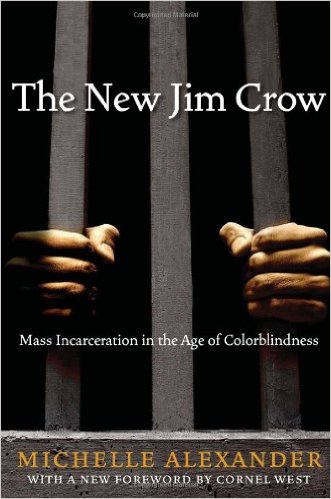 Michelle Alexander and Dr. Cornel West's book directly challenged the notion that Barack Obama's election win represented a new era of colorblindness. The authors theories were proven correct with Trump's racist and successful campaign.
Michelle Alexander and Dr. Cornel West's book directly challenged the notion that Barack Obama's election win represented a new era of colorblindness. The authors theories were proven correct with Trump's racist and successful campaign.With dazzling candor, legal scholar Michelle Alexander argues that "we have not ended racial caste in America; we have merely redesigned it." By targeting black men through the War on Drugs and decimating communities of color, the U.S. criminal justice system functions as a contemporary system of racial controlrelegating millions to a permanent second-class statuseven as it formally adheres to the principle of colorblindness.
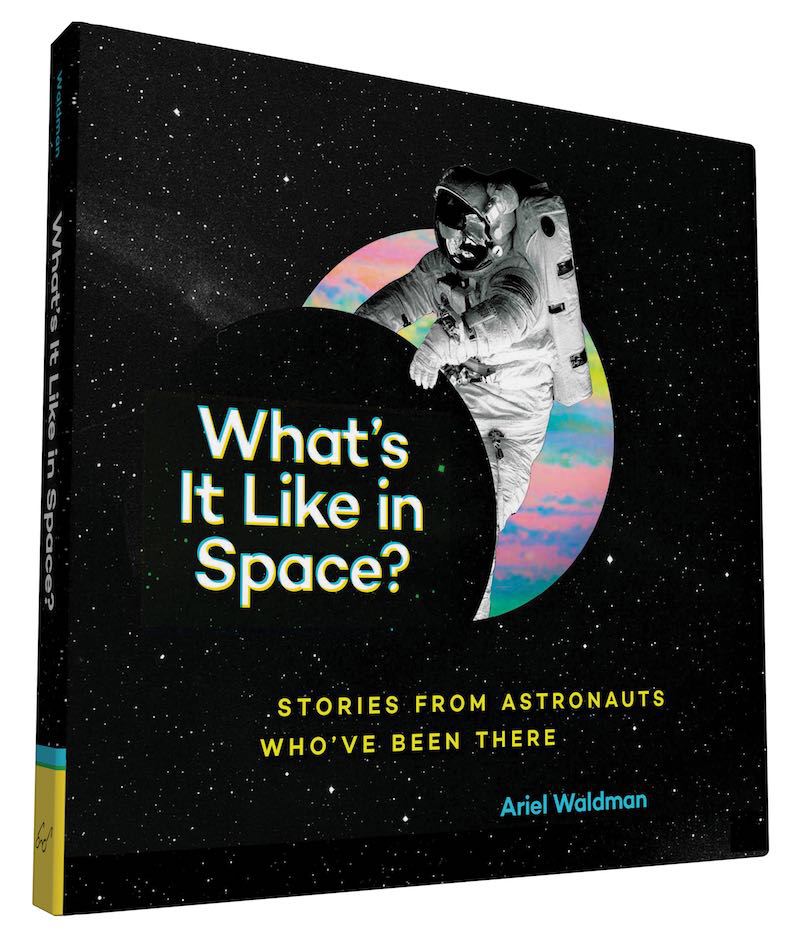 Written by Ariel Waldman, creator of Spacehack, and illustrated by Brian Standeford, "What's It Like in Space? Stories from Astronauts Who'Ve Been There" is a fun collection of astronaut anecdotes about everything from sneezing and farting in zero gravity to weird frights and the necessity of Sriracha in space. A delightful gift for space geeks and science nerds of any age.
Written by Ariel Waldman, creator of Spacehack, and illustrated by Brian Standeford, "What's It Like in Space? Stories from Astronauts Who'Ve Been There" is a fun collection of astronaut anecdotes about everything from sneezing and farting in zero gravity to weird frights and the necessity of Sriracha in space. A delightful gift for space geeks and science nerds of any age.
What an absolutely delightful read: the projects are nicely staged, moving from the very simple to the very ambitious, and always seasoned with clever suggestions for variations. Burton provides advice on setting up crafting parties with your friends, including suggested feminist holidays to celebrate (Joan of Arc's birthday; Ruth Bader Ginsburg's birthday; anniversary of Sojourner Truth's "Ain't I a Woman?" speech; Thargelia, Festival of the Goddess Artemis) all the way down to suggested playlists for the day.
Burton's provided us with a selection of the projects for your delectation: as you'll quickly see, these are the fun, potent defiant tonic that we all need in this season of fragile masculinity, rape culture, and Gamergating.
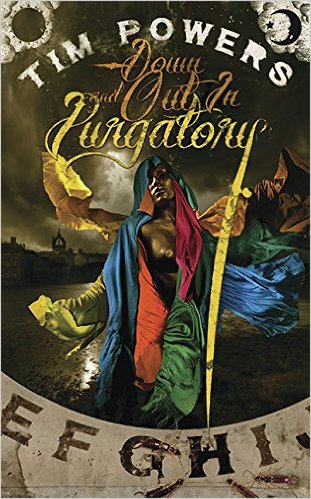 Tim Powers has mastered mingling our present with elements of the fantastic, creating stories so immersive and believable I'm always disappointed when they end. Down and Out in Purgatory is a new, incredible example.Shasta DiMaio fell for the wrong guy, and it killed her. Her rejected lover Tom Holbrook still carries a torch, however. If Tom can't have Shasta he'll kill the man who took her heart, and her life, even if he's already dead. Powers has focused on ghosts, and had them as major characters in other works, but this novella gives us a glimpse into their world! His purgatory is a spinning, wild place where we learn a bit more about what death really means. While the characters are fun, the real joy of this was the mechanics, and lore Powers shares about the afterlife. If you loved his Fault Lines trilogy, you won't be disappointed.
Tim Powers has mastered mingling our present with elements of the fantastic, creating stories so immersive and believable I'm always disappointed when they end. Down and Out in Purgatory is a new, incredible example.Shasta DiMaio fell for the wrong guy, and it killed her. Her rejected lover Tom Holbrook still carries a torch, however. If Tom can't have Shasta he'll kill the man who took her heart, and her life, even if he's already dead. Powers has focused on ghosts, and had them as major characters in other works, but this novella gives us a glimpse into their world! His purgatory is a spinning, wild place where we learn a bit more about what death really means. While the characters are fun, the real joy of this was the mechanics, and lore Powers shares about the afterlife. If you loved his Fault Lines trilogy, you won't be disappointed.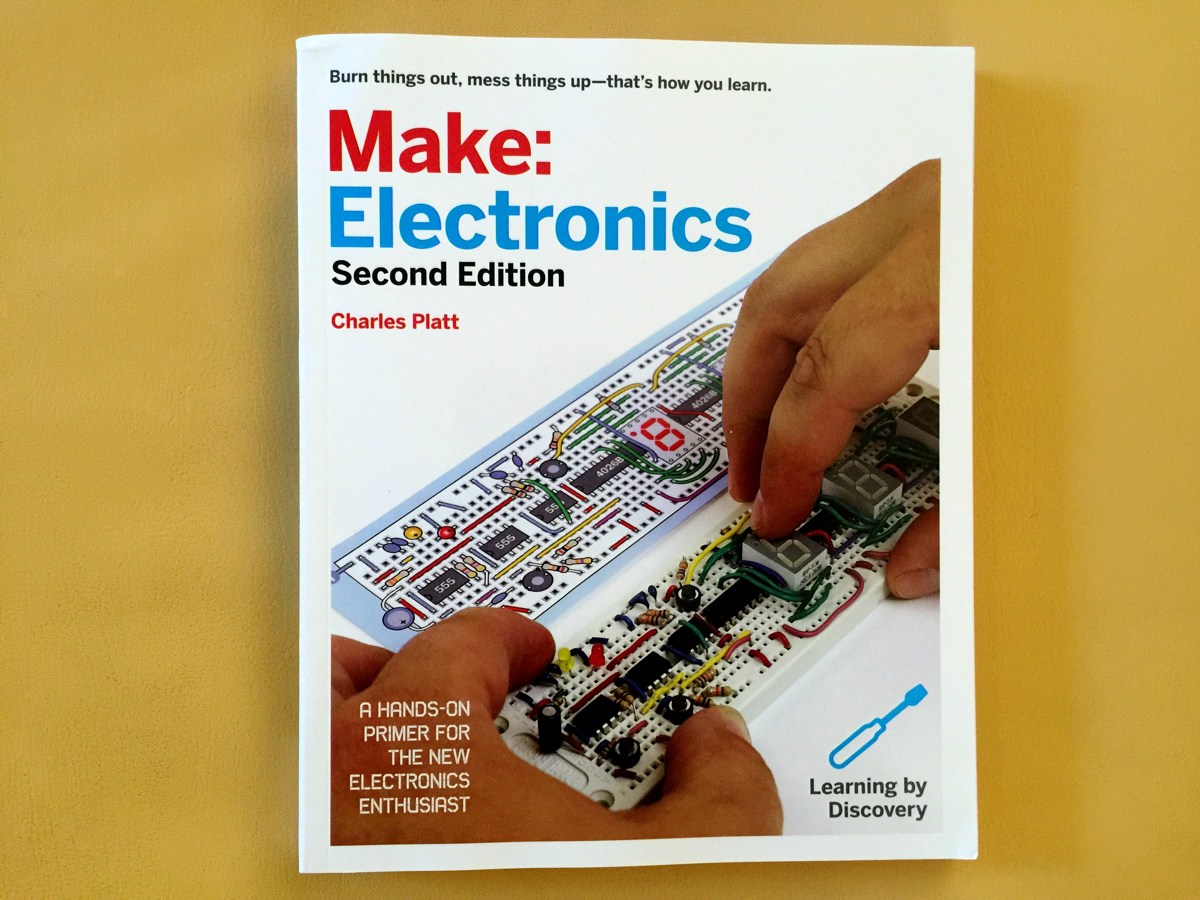 When Make: Electronics was published about five years ago, it was widely hailed as the greatest book about learning electronics ever written. With beautiful photos, easy-to-read schematics, clear, jargon-free text, and dozens and dozens of fun and educational projects, author/illustrator Charles Platt made a book that has ended up in every makerspace and library I've visited. A few weeks ago the Second Edition of Make: Electronics came out, and it's even better than the first edition. Charles rewrote the text, replaced the photos of breadboarded circuits with diagrams showing component placement, included new projects, added new photographs with a ruled background to indicate the scale of tools and components, and included a chapter on Arduino. This is the book to get if you want to learn electronics.
When Make: Electronics was published about five years ago, it was widely hailed as the greatest book about learning electronics ever written. With beautiful photos, easy-to-read schematics, clear, jargon-free text, and dozens and dozens of fun and educational projects, author/illustrator Charles Platt made a book that has ended up in every makerspace and library I've visited. A few weeks ago the Second Edition of Make: Electronics came out, and it's even better than the first edition. Charles rewrote the text, replaced the photos of breadboarded circuits with diagrams showing component placement, included new projects, added new photographs with a ruled background to indicate the scale of tools and components, and included a chapter on Arduino. This is the book to get if you want to learn electronics.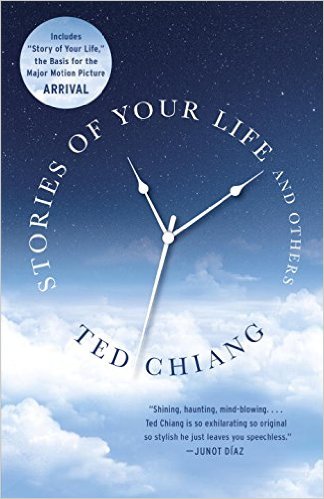 Ted Chiang's writing is rare and precise, weaving threads of science fiction into something so haunting and humane I've woken up dreaming about it more than once. Here you can read most of his published work, including the novella that was recently filmed as Arrival and is currently in U.S. theaters. But my favorites are the Borgesian "Tower of Babel," about an engineer breaking through the vault of heaven, and "Division by Zero."
Ted Chiang's writing is rare and precise, weaving threads of science fiction into something so haunting and humane I've woken up dreaming about it more than once. Here you can read most of his published work, including the novella that was recently filmed as Arrival and is currently in U.S. theaters. But my favorites are the Borgesian "Tower of Babel," about an engineer breaking through the vault of heaven, and "Division by Zero." Intended "as much for the cooking enthusiast as for the survivalist," Leda Meredith's book includes recipes that make weeds into gourmet meals.
Intended "as much for the cooking enthusiast as for the survivalist," Leda Meredith's book includes recipes that make weeds into gourmet meals.Dandelion flowers become wine, Japanese knotweed becomes rhubarb-like compote and tangy sorbet, red clover blossoms give quick bread a delightfully spongy texture and hint of sweetness. 75 color photographs
 Finally reprinted, this classic and rare tome about the fascinating 1980s British occult/art scene surrounding seminal industrial bands Coil, Nurse With Wound, and Current 93 who looked backwards for inspiration from the likes of Aleister Crowley, Austin Osman Spare, and Arthur Machen. Lovingly published by Strange Attractor Press, this new edition is illustrated with unseen photos and contains two fresh chapters pulling the fascinating thread of occultural transgression through to the present.
Finally reprinted, this classic and rare tome about the fascinating 1980s British occult/art scene surrounding seminal industrial bands Coil, Nurse With Wound, and Current 93 who looked backwards for inspiration from the likes of Aleister Crowley, Austin Osman Spare, and Arthur Machen. Lovingly published by Strange Attractor Press, this new edition is illustrated with unseen photos and contains two fresh chapters pulling the fascinating thread of occultural transgression through to the present.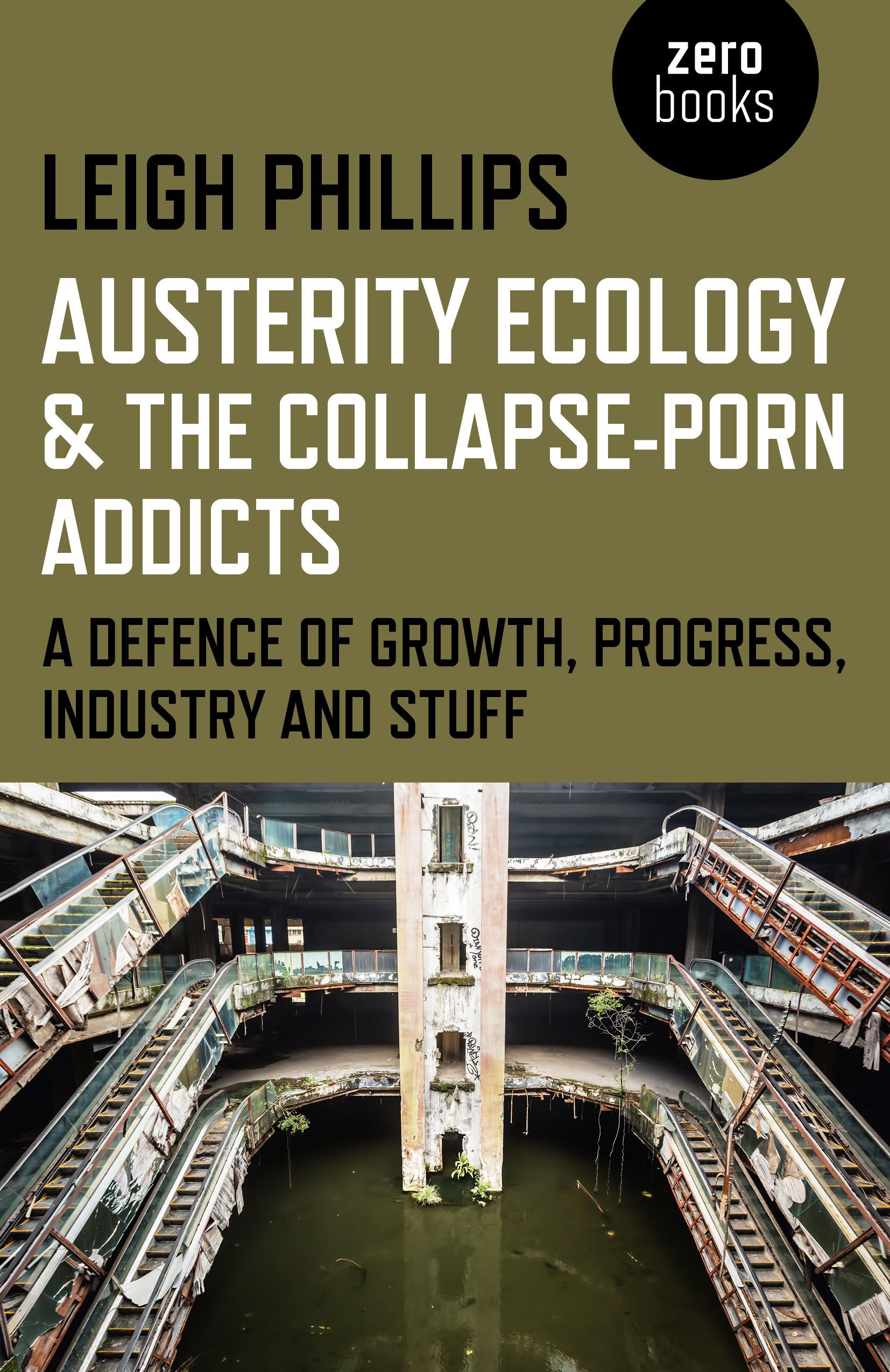 "Radical ecology" has come to mean a kind of left-wing back-to-the-landism that throws off consumer culture and mass production for a pastoral low-tech lifestyle. But as the brilliant science journalist and Marxist Leigh Phillips writes in Austerity Ecology & the Collapse-Porn Addicts: A Defence Of Growth, Progress, Industry And Stuff, if the left has a future, it has to reclaim its Promethean commitment to elevating every human being to a condition of luxurious, material abundance and leisure through technological progress.
"Radical ecology" has come to mean a kind of left-wing back-to-the-landism that throws off consumer culture and mass production for a pastoral low-tech lifestyle. But as the brilliant science journalist and Marxist Leigh Phillips writes in Austerity Ecology & the Collapse-Porn Addicts: A Defence Of Growth, Progress, Industry And Stuff, if the left has a future, it has to reclaim its Promethean commitment to elevating every human being to a condition of luxurious, material abundance and leisure through technological progress.Phillips is a brilliant writer and an incisive scientific thinker with impeccable credentials in the science press. He's also an unapologetic Marxist. In this book -- which is one of the most entertaining and furious reads about politics and climate you're likely to read -- he rails against the "austerity ecology" movement that calls for more labor-intensive processes, an end to the drive to increase material production, and a "simpler" life that often contains demands for authoritarian, technocratic rule, massive depopulation, and a return to medieval drudgery.
It wasn't always thus. The left -- especially Marxist left -- has a long history of glorifying technological progress and proposing it as the solution to humanity's woes. Rather than blaming the machine for pollution, Marxists blame capitalism for being a system that demands that firms pollute to whatever extent they can, right up the point where the fines outweigh the savings.
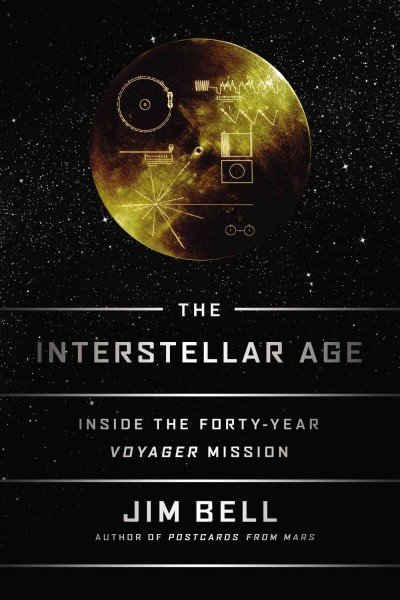 In 1977, NASA launched two twin spacecraft, Voyager 1 and Voyager 2, on a grand tour of the solar system and beyond into the mysteries of interstellar space. Mounted to each of these spacecraft is a stunning golden phonograph record containing sounds and images to introduce our civilization to any extraterrestrials who might encounter them. Get ready for Voyagers 40th anniversary next year with this marvelous, personal biography of the space probes and the brilliant people who made the mission happen. Author Jim Bell is a renowned planetary scientist at Arizona State University, Distinguished Visiting Scientist at NASA's Jet Propulsion Laboratory, and president of the absolutely amazing Planetary Society, founded in 1980 by Carl Sagan, Bruce Murray, and Louis Friedman to "empower the world's citizens to advance space science and exploration."
In 1977, NASA launched two twin spacecraft, Voyager 1 and Voyager 2, on a grand tour of the solar system and beyond into the mysteries of interstellar space. Mounted to each of these spacecraft is a stunning golden phonograph record containing sounds and images to introduce our civilization to any extraterrestrials who might encounter them. Get ready for Voyagers 40th anniversary next year with this marvelous, personal biography of the space probes and the brilliant people who made the mission happen. Author Jim Bell is a renowned planetary scientist at Arizona State University, Distinguished Visiting Scientist at NASA's Jet Propulsion Laboratory, and president of the absolutely amazing Planetary Society, founded in 1980 by Carl Sagan, Bruce Murray, and Louis Friedman to "empower the world's citizens to advance space science and exploration." 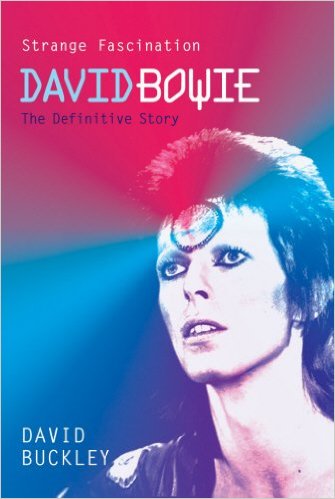 Bowie loved books more than he loved music, but he disliked biography and never produced an autobiography. In his wake, then, we're left with pictures and unauthorized, often tabloid-hinted exposes of a life largely kept private. The best of them is probably David Buckley's Strange Fascination, described as "the most complete account of Bowie's impact on pop culture." Buckley's enough of a fan to love the man and the work, but enough of a skeptic to make it count.
Bowie loved books more than he loved music, but he disliked biography and never produced an autobiography. In his wake, then, we're left with pictures and unauthorized, often tabloid-hinted exposes of a life largely kept private. The best of them is probably David Buckley's Strange Fascination, described as "the most complete account of Bowie's impact on pop culture." Buckley's enough of a fan to love the man and the work, but enough of a skeptic to make it count.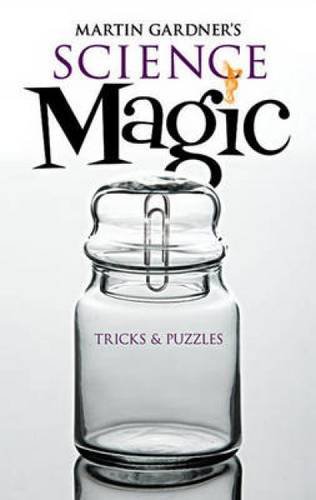 Martin Gardner's 'Science Magic: Tricks and Puzzles' teaches fun and easy experiments to demonstrate physics. I'm thrilled with the new tricks I'm learning! Gardner shares exciting, and generally simple, science experiments with engaging, sometimes astounding results. Play with the adhesion and cohesion of water, magnetism, volume and mass, friction, stiction, pressure, and tons of other fascinating scientific properties, to both learn and amaze. Some simple effects, like 'three jets' are pretty simple, where you drill holes in a milk carton at different levels to show changes in water pressure, however some are not for younger kids to try on their own. 'The electric pickle' is one that requires adult supervision. A glowing pickle is certainly cool, but spiking a cucumber, and plugging it into a wall socket via a cut extension cord, is something I'd prefer an adult be present for. My kid and I are having fun playing with 1-2 of these experiments each week. A few of the presentations may become magic tricks I use with friends.
Martin Gardner's 'Science Magic: Tricks and Puzzles' teaches fun and easy experiments to demonstrate physics. I'm thrilled with the new tricks I'm learning! Gardner shares exciting, and generally simple, science experiments with engaging, sometimes astounding results. Play with the adhesion and cohesion of water, magnetism, volume and mass, friction, stiction, pressure, and tons of other fascinating scientific properties, to both learn and amaze. Some simple effects, like 'three jets' are pretty simple, where you drill holes in a milk carton at different levels to show changes in water pressure, however some are not for younger kids to try on their own. 'The electric pickle' is one that requires adult supervision. A glowing pickle is certainly cool, but spiking a cucumber, and plugging it into a wall socket via a cut extension cord, is something I'd prefer an adult be present for. My kid and I are having fun playing with 1-2 of these experiments each week. A few of the presentations may become magic tricks I use with friends.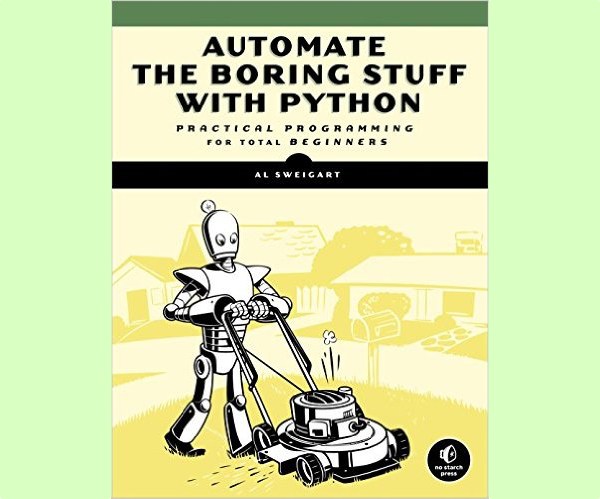 When I was a mechanical engineer in the late 1980s I used Microsoft QuickBASIC to write and create simple programs for work. I loved it. It was a compiled BASIC, too, so it was speedy. I used it to recreate a lot of the programs from Rudy Rucker's Chaos software from Autodesk. I got pretty good at writing programs in BASIC, just as I got pretty good at nodding my head when my smarter programmer friends would tell me that BASIC was not a real programming language.
When I was a mechanical engineer in the late 1980s I used Microsoft QuickBASIC to write and create simple programs for work. I loved it. It was a compiled BASIC, too, so it was speedy. I used it to recreate a lot of the programs from Rudy Rucker's Chaos software from Autodesk. I got pretty good at writing programs in BASIC, just as I got pretty good at nodding my head when my smarter programmer friends would tell me that BASIC was not a real programming language. I never learned any other languages, but recently I've started using Python and it is easy and fun. One thing I did with Python was write a nontransitive dice simulator to prove to myself that these confounding dice really worked as described. I just got my hands on a new book called Automate the Boring Stuff with Python: Practical Programming for Total Beginners by Al Sweigart, and it looks like it is exactly what I need: a book for beginners and with lots of ideas for programs that are actually useful.
Examples:Search for text in a file or across multiple files Create, update, move, and rename files and folders Search the Web and download online content Update and format data in Excel spreadsheets of any size Split, merge, watermark, and encrypt PDFs Send reminder emails and text notifications Fill out online forms
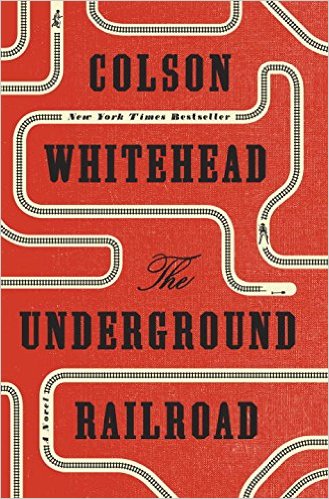 Colson Whitehead's National Book Award Winner and #1 New York Times bestseller is a Magnificent tour de force chronicling a young slave's adventures as she makes a desperate bid for freedom in the antebellum South.
Colson Whitehead's National Book Award Winner and #1 New York Times bestseller is a Magnificent tour de force chronicling a young slave's adventures as she makes a desperate bid for freedom in the antebellum South. Laura Poitras, whose 2014 Edward Snowden documentary Citizenfour won the Academy Award for best doc, has a show on at NYC's Whitney Museum called "Astro Noise," which attempts to capture the sense of overwhelming surveillance she's lived under since the US government targeted her while she was shooting a documentary in Iraq.
Laura Poitras, whose 2014 Edward Snowden documentary Citizenfour won the Academy Award for best doc, has a show on at NYC's Whitney Museum called "Astro Noise," which attempts to capture the sense of overwhelming surveillance she's lived under since the US government targeted her while she was shooting a documentary in Iraq.Poitras is an accomplished person: winner of the Macarthur "genius" grant and the Pulitzer in addition to her Oscar. She returned from exile in Germany last year, and edited a book, Astro Noise: A Survival Guide for Living Under Total Surveillance, to accompany the show. The book includes contributions from the likes of Dave Eggers and Ai Wei Wei, as well as an original, unauthorized Sherlock Holmes story I wrote based on new Snowden docs.
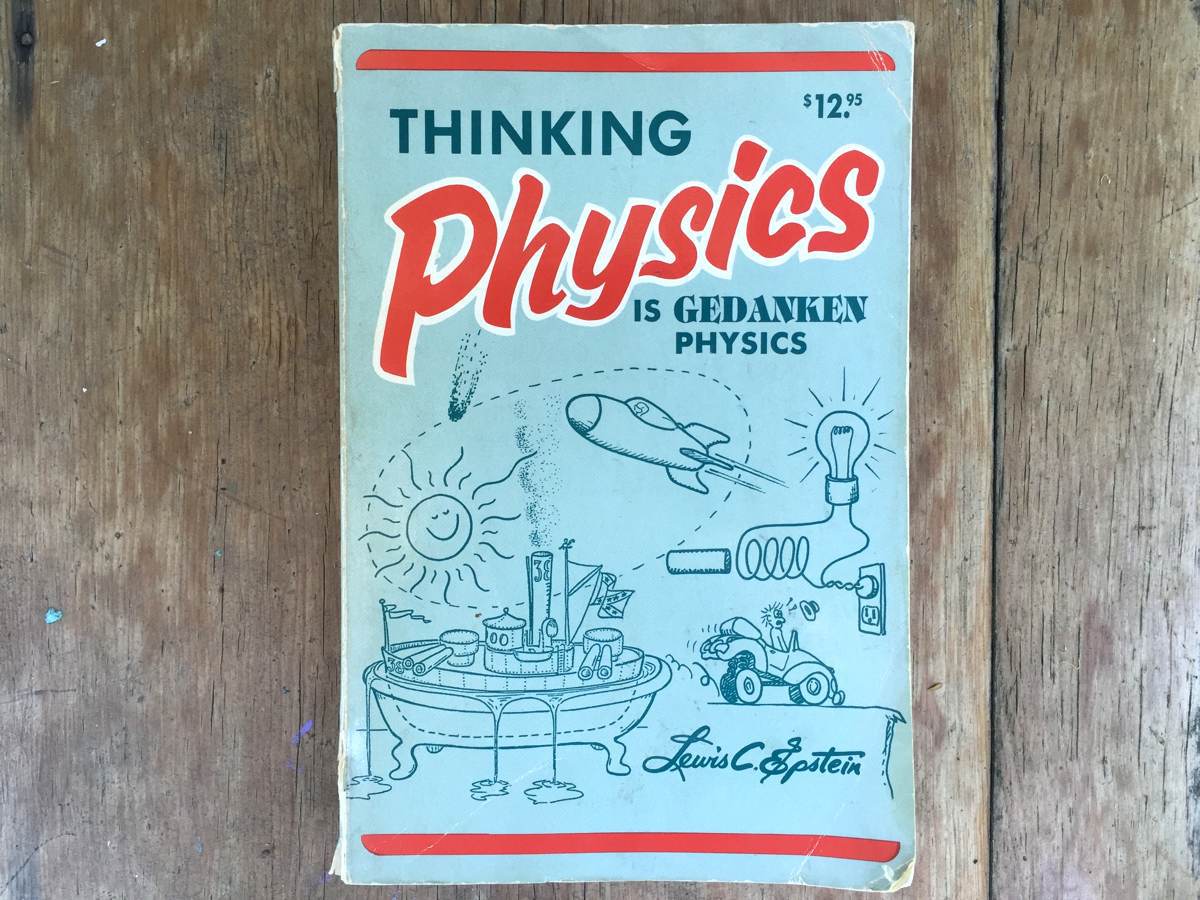 I bought Thinking Physics, by Lewis C. Epstein in 1984. It's one of my favorite books of brain teasers. They are designed to help you gain a qualitative, intuitive sense of physics. The author stresses that after you read each of the many charmingly illustrated problems in the book, you should put the book away and take your time running a simulation of the problem in your head. This is great advice. The book is broken up into sections: Mechanics (kinematics, Newton's Law of Motion, momentum and energy, rotation, gravity), Fluids, Heat, Vibration, Light, Electricity and Magnetism, Relativity, and Quanta. If you've never seen this book before, you're in for a treat.
I bought Thinking Physics, by Lewis C. Epstein in 1984. It's one of my favorite books of brain teasers. They are designed to help you gain a qualitative, intuitive sense of physics. The author stresses that after you read each of the many charmingly illustrated problems in the book, you should put the book away and take your time running a simulation of the problem in your head. This is great advice. The book is broken up into sections: Mechanics (kinematics, Newton's Law of Motion, momentum and energy, rotation, gravity), Fluids, Heat, Vibration, Light, Electricity and Magnetism, Relativity, and Quanta. If you've never seen this book before, you're in for a treat. If the Zap Comix collective hung out in Gary Larson's basement rolling numbers on psychedelic record covers while giggling about those motivational calendars where you tear off one earnest aphorism each day, and the internal awkwardness that all of us experience, the comix that emerge would likely fit into I'm Bored, the surreal and wonderful new book by illustrator Jess Rotter with a foreword by Kate and Laura Mulleavy of Rodarte. You likely recognize Jess's art from her inspired illustrations for vinyl and apparel projects from Rodriguez, the Grateful Dead, Yusuf/Cat Stevens, Best Coast, Light in the Attic Records, and her bimonthly "Songbird Stories" column for Lena Dunham's Lenny Letter. I'm Bored is Jess's first book and I'm already ready for the next trip.
If the Zap Comix collective hung out in Gary Larson's basement rolling numbers on psychedelic record covers while giggling about those motivational calendars where you tear off one earnest aphorism each day, and the internal awkwardness that all of us experience, the comix that emerge would likely fit into I'm Bored, the surreal and wonderful new book by illustrator Jess Rotter with a foreword by Kate and Laura Mulleavy of Rodarte. You likely recognize Jess's art from her inspired illustrations for vinyl and apparel projects from Rodriguez, the Grateful Dead, Yusuf/Cat Stevens, Best Coast, Light in the Attic Records, and her bimonthly "Songbird Stories" column for Lena Dunham's Lenny Letter. I'm Bored is Jess's first book and I'm already ready for the next trip.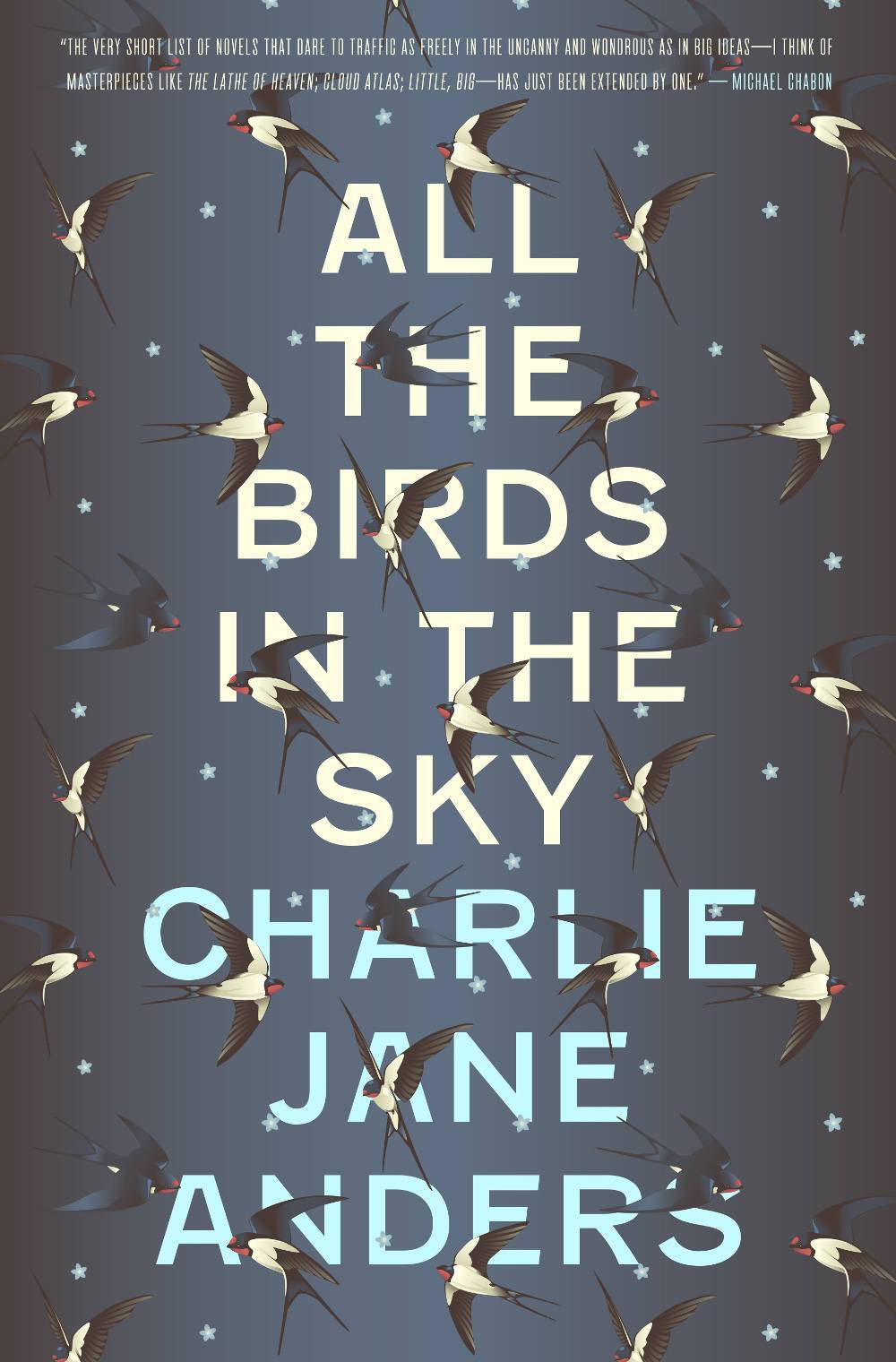 All the Birds in the Sky is everything you could ask for in a debut novel -- a fresh look at science fiction's most cherished memes, ruthlessly shredded and lovingly reassembled.
All the Birds in the Sky is everything you could ask for in a debut novel -- a fresh look at science fiction's most cherished memes, ruthlessly shredded and lovingly reassembled.It's odd to call Charlie Jane Anders, editor of IO9 and celebrated short-story writer and editor a "debut novelist," but All the Birds in the Sky is her first science fiction novel for adults, and it embodies all that's best about debut novels -- a lifetime's worth of creativity, frustrations and inspirations crammed into a single set of covers, bursting with wild promise.
Patricia is a witch. One day while hiding out in the woods from her dysfunctional family -- psychotic sister, dead-eyed overachiever parents -- she discovers that she can speak to animals, and finds herself in the presence of the Parliament of Birds, who ask her a riddle. She blacks out and awakens in her family house and facing punishment.
Laurence is a geek. He has successfully managed many of the serious challenges to attaining full geekdom -- building his own GNU/Linux box and successfully decoding the notoriously cryptic instructions for building a two-second time-machine, you know, one of those watches that makes you jump two seconds into the future? He is the goat of his school and a perennial disappointment to his violently normal parents.
Of course they become friends, and enemies. At their awful school, both are targeted for vicious bullying, and they try to have each other's backs, though they can't, exactly. Especially Laurence, who's a bit of a dick. It doesn't help that the school guidance counsellor is a psychotic assassin who's had a vision of Patricia and Laurence growing up to destroy the human race, and who is doing his best to kill them both, though the assassin's guild rules prohibit him personally slipping in the knife.
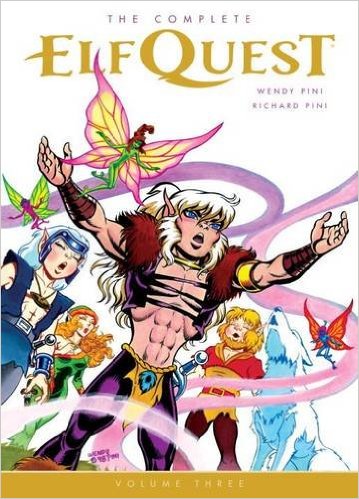 Fresh out in November, this volume contains some of the most exquisite and touching episodes of Wendy and Richard Pini's Elfquest saga, a great alternative to genre fantasy and its grim 'n' gritty modern counterparts. One of America's best indie comics, it's illustrated by Wendy's wonderful artwork – even at its most lighthearted, unanswerable questions of identity, family and freedom lurk between the lines. (Newcomers should not feel they have to start at the beginning, but it sure helps.)
Fresh out in November, this volume contains some of the most exquisite and touching episodes of Wendy and Richard Pini's Elfquest saga, a great alternative to genre fantasy and its grim 'n' gritty modern counterparts. One of America's best indie comics, it's illustrated by Wendy's wonderful artwork – even at its most lighthearted, unanswerable questions of identity, family and freedom lurk between the lines. (Newcomers should not feel they have to start at the beginning, but it sure helps.)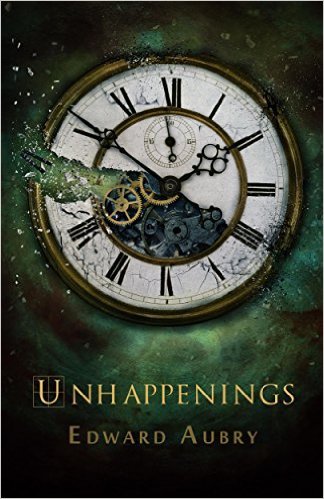 Edward Aubry's Unhappenings is a smart and satisfying time travel novel. I love stories about paradox created by folks moving around in time, and this novel has it in spades. At age 14 Nigel Walden starts to experience the titular Unhappenings, mundane things in his life seem to random change. The color of his bicycle changes, and conversations he thought he had never occurred, but then his first girlfriend disappears as if she never existed. Every time Nigel gets close to someone, he seemingly causes a catastrophe that leaves the relationship never having happened. As he reaches college, Nigel realizes he must be involved in some sort of time travel. Things only get more complicated. Aubry's writing is clear, simple and telling. I felt Nigel's emotional traumas and the difficulty of growing up so different, the slower pace of this novel is well employed.
Edward Aubry's Unhappenings is a smart and satisfying time travel novel. I love stories about paradox created by folks moving around in time, and this novel has it in spades. At age 14 Nigel Walden starts to experience the titular Unhappenings, mundane things in his life seem to random change. The color of his bicycle changes, and conversations he thought he had never occurred, but then his first girlfriend disappears as if she never existed. Every time Nigel gets close to someone, he seemingly causes a catastrophe that leaves the relationship never having happened. As he reaches college, Nigel realizes he must be involved in some sort of time travel. Things only get more complicated. Aubry's writing is clear, simple and telling. I felt Nigel's emotional traumas and the difficulty of growing up so different, the slower pace of this novel is well employed.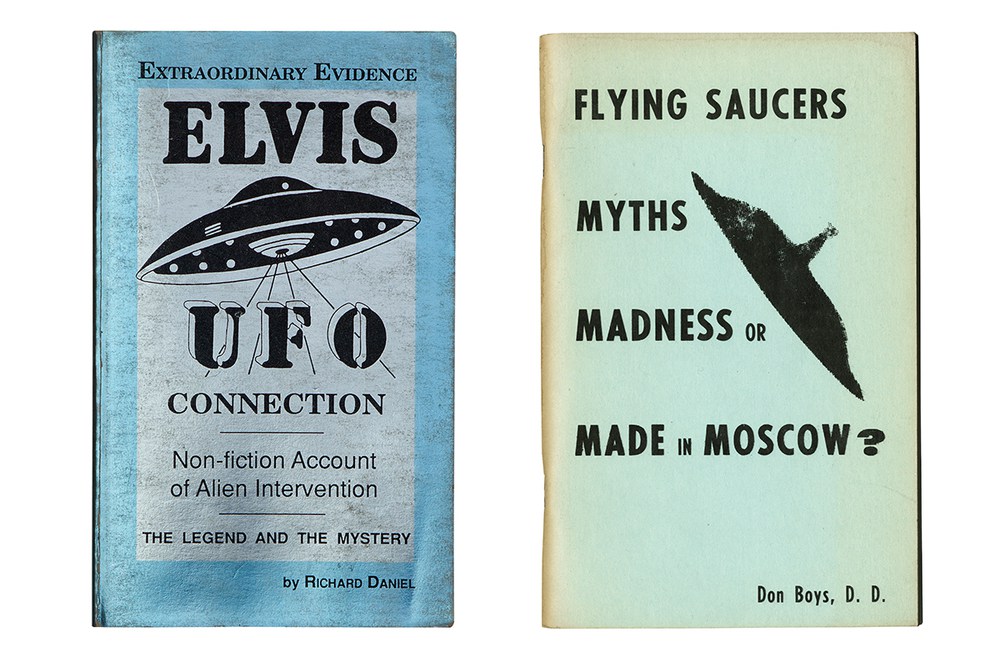
Jack Womack is an accomplished science fiction writer and part of the first wave of cyberpunks; he's also one of the world's foremost collectors of flying saucer ephemera: the zines, cheap paperbacks, and esoteric material associated with the saucer-craze, a virtually forgotten, decades-long global mania that features livestock mutilations, abductions, messages of intergalactic brotherhood, claims of both divine and satanic origins, and psychic phenomena.
Womack's collection has found a permanent home at Georgetown University's library, and Womack has lovingly curated a spectacular, 283-page anthology of the most fascinating material from the collection, accompanied by his notes and an introduction by William Gibson, whose own mother once saw a saucer.
Flying saucers are like hot sauce: whatever you love best, you might love it better with a few dashes of saucers. Womack's thematically organized collection traces how saucers worked their way into Christianity, Satanic panics, Red scares, belief in psi powers, military conspiracy theories, hollow Earth conspiracies, New Age reboots of Tibetan mysticism, conspiracies about Nazis (and Hitler), and, of course, radical, unhinged theories about Elvis Presley.
Womack presents his material with bone-dry wit -- if you've ever heard him speak, I guarantee you'll be able to hear his urbane, deadpan delivery in every sentence. He's not exactly making fun of his subjects. Oh, OK, sometimes he is, but just the most naked of hucksters and scammers -- but when it comes to the true believers, Womack has a mix of compassion and wonder at their ability to believe what they believe -- and convince others of their beliefs.
 You're probably familiar with Scratch, the introductory programming language that allows kids (and adults) to create interactive stories, games, and animations. Scratch doesn't require lines of code to write programs. Instead, you build programs by snapping together colored blocks. (My book, Maker Dad, has an introduction to Scratch that shows how to make retro-style video games).
You're probably familiar with Scratch, the introductory programming language that allows kids (and adults) to create interactive stories, games, and animations. Scratch doesn't require lines of code to write programs. Instead, you build programs by snapping together colored blocks. (My book, Maker Dad, has an introduction to Scratch that shows how to make retro-style video games). Scratch is perfect for kids 8 and up. Recently, MIT Media Lab's Lifelong Kindergarten Lab announced the release of ScratchJr, an even simpler programming language for young children (ages 5-7) to create interactive stories and games. It's free and runs on iPads and Android tablets. Mitchel Resnick, who runs MIT Media Lab's Lifelong Kindergarten Lab, and Marina Umaschi Bers, a professor in the Computer Science Department at Tufts University, have a new book out called, The Official ScratchJr Book: Help Your Kids Learn to Code. The publisher sent me a copy, and it looks like a great way for parents to learn about ScratchJr so they can get their kids up to speed and let them go off on their own. With full color screenshots on every page, it provides a thorough overview of everything ScratchJr is capable of doing. More
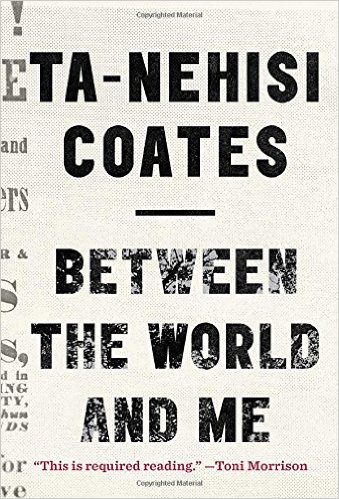 A master class on race from Ta-Nehisi Coates, one of America's most bold voices. Really all you need to know. Read it.
A master class on race from Ta-Nehisi Coates, one of America's most bold voices. Really all you need to know. Read it.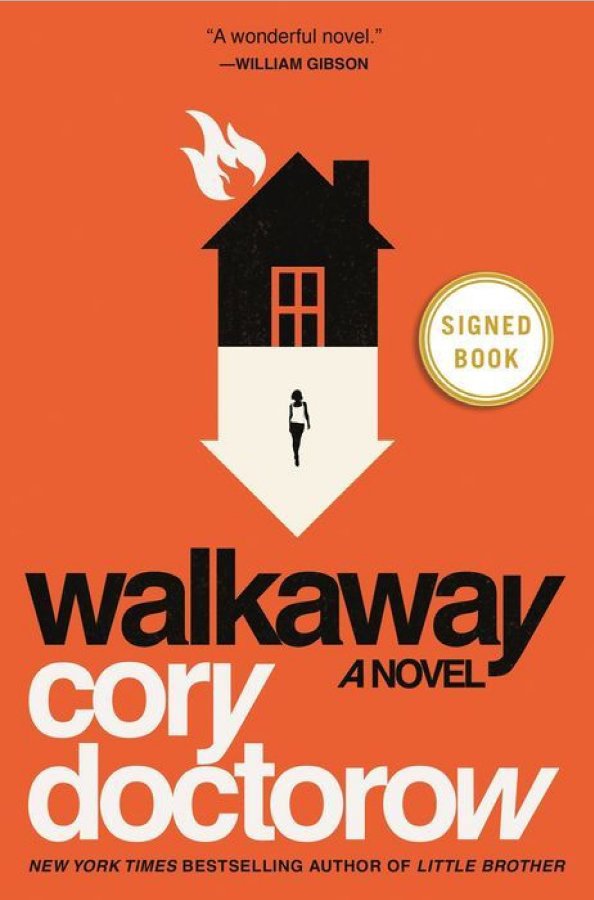 It took most of a week to sign all 2,800 "tip-in" sheets that are being bound into a special, limited-edition version of Walkaway, my first novel for adults since 2009, but it was worth it! You can pre-order one from the good fellows at Barnes and Noble.
It took most of a week to sign all 2,800 "tip-in" sheets that are being bound into a special, limited-edition version of Walkaway, my first novel for adults since 2009, but it was worth it! You can pre-order one from the good fellows at Barnes and Noble.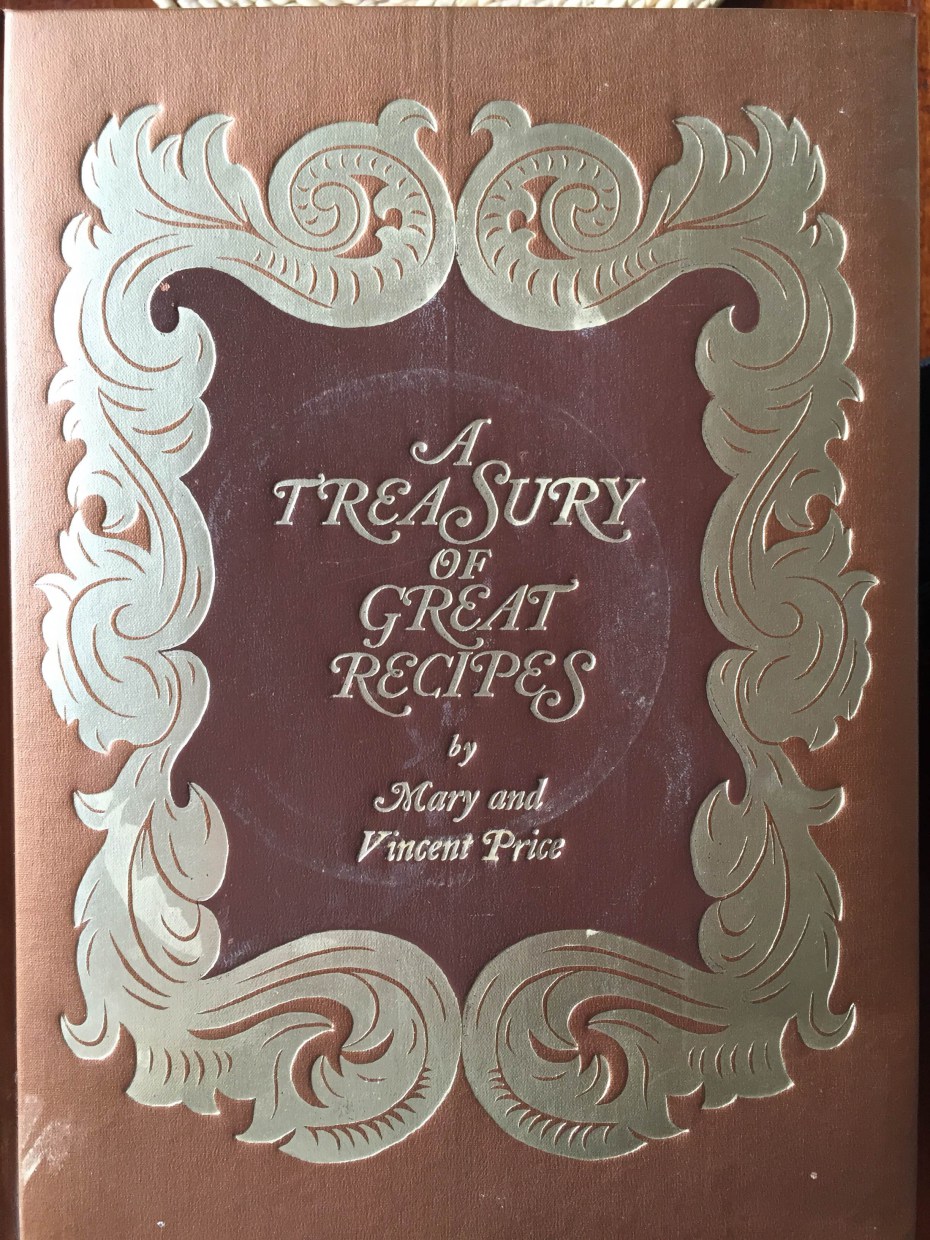 Wandering through a used book store yesterday, I came across a book with an unremarkable title: A Treasury of Great Recipes. Normally this would not catch my attention, but the book's co-authors were Vincent and Mary Price. I had no idea that the horror film star and his wife were so amazing! In addition to both being world famous for their careers, thespian and costume designer respectively, they were also world travelers, collectors of art, and evidently lovers of fine food. Vincent and Mary are said to have begged, flattered and connived to acquire their favorite recipes from the the world's most famous restaurants. This book is as much an adventure as it is a collection of recipes. Vincent and Mary. Published in 1965, it contains personal stories from Vincent and Mary, and descriptions of the restaurants. It is also full of photographs of the couple and their friends enjoying the restaurants, reprints of the restaurant's menus, and a most importantly, a collection of recipes that Vincent and Mary used to recreate the dishes at home, for their guests. The written descriptions of each item show you just how awesome this couple was. Try this description of New England Clam Chowder, from Boston's famous Locke-Ober's: This is the true, the authentic clam chowder invented and relished by seagoing New Englanders, and a favorite there for generations. There is something called Manhattan Clam Chowder made with tomatoes and therefore a ruddy color, but your proper Bostonian will have nothing to do with that aberrant form. Locke-Ober's recipe is for the pale cream-colored soup to which you may add a dusting of paprika for color, no more. As far as flavor is concerned, it doesn't even need that. The voice throughout is direct, refined, and clearly reflects their passion for the subject at hand. This amazing collection is filled with gems: Breakfasts from the Super Chief, dinners from Rivoli in Mexico City, and fantastic German fare from Lchow's in New York are but a few of the locations that grabbed my interest. I have big plans for this tome. I'm going to start having friends over for a series of Vincent and Mary Price meals. This Friday may include clam chowder. The cream-colored variety, of course. I found this book at my local used bookstore in wonderful shape for $35. Clearly the Amazon vendors want more. But it's worth acquiring, however you go about it, and whatever price you pay.
Wandering through a used book store yesterday, I came across a book with an unremarkable title: A Treasury of Great Recipes. Normally this would not catch my attention, but the book's co-authors were Vincent and Mary Price. I had no idea that the horror film star and his wife were so amazing! In addition to both being world famous for their careers, thespian and costume designer respectively, they were also world travelers, collectors of art, and evidently lovers of fine food. Vincent and Mary are said to have begged, flattered and connived to acquire their favorite recipes from the the world's most famous restaurants. This book is as much an adventure as it is a collection of recipes. Vincent and Mary. Published in 1965, it contains personal stories from Vincent and Mary, and descriptions of the restaurants. It is also full of photographs of the couple and their friends enjoying the restaurants, reprints of the restaurant's menus, and a most importantly, a collection of recipes that Vincent and Mary used to recreate the dishes at home, for their guests. The written descriptions of each item show you just how awesome this couple was. Try this description of New England Clam Chowder, from Boston's famous Locke-Ober's: This is the true, the authentic clam chowder invented and relished by seagoing New Englanders, and a favorite there for generations. There is something called Manhattan Clam Chowder made with tomatoes and therefore a ruddy color, but your proper Bostonian will have nothing to do with that aberrant form. Locke-Ober's recipe is for the pale cream-colored soup to which you may add a dusting of paprika for color, no more. As far as flavor is concerned, it doesn't even need that. The voice throughout is direct, refined, and clearly reflects their passion for the subject at hand. This amazing collection is filled with gems: Breakfasts from the Super Chief, dinners from Rivoli in Mexico City, and fantastic German fare from Lchow's in New York are but a few of the locations that grabbed my interest. I have big plans for this tome. I'm going to start having friends over for a series of Vincent and Mary Price meals. This Friday may include clam chowder. The cream-colored variety, of course. I found this book at my local used bookstore in wonderful shape for $35. Clearly the Amazon vendors want more. But it's worth acquiring, however you go about it, and whatever price you pay.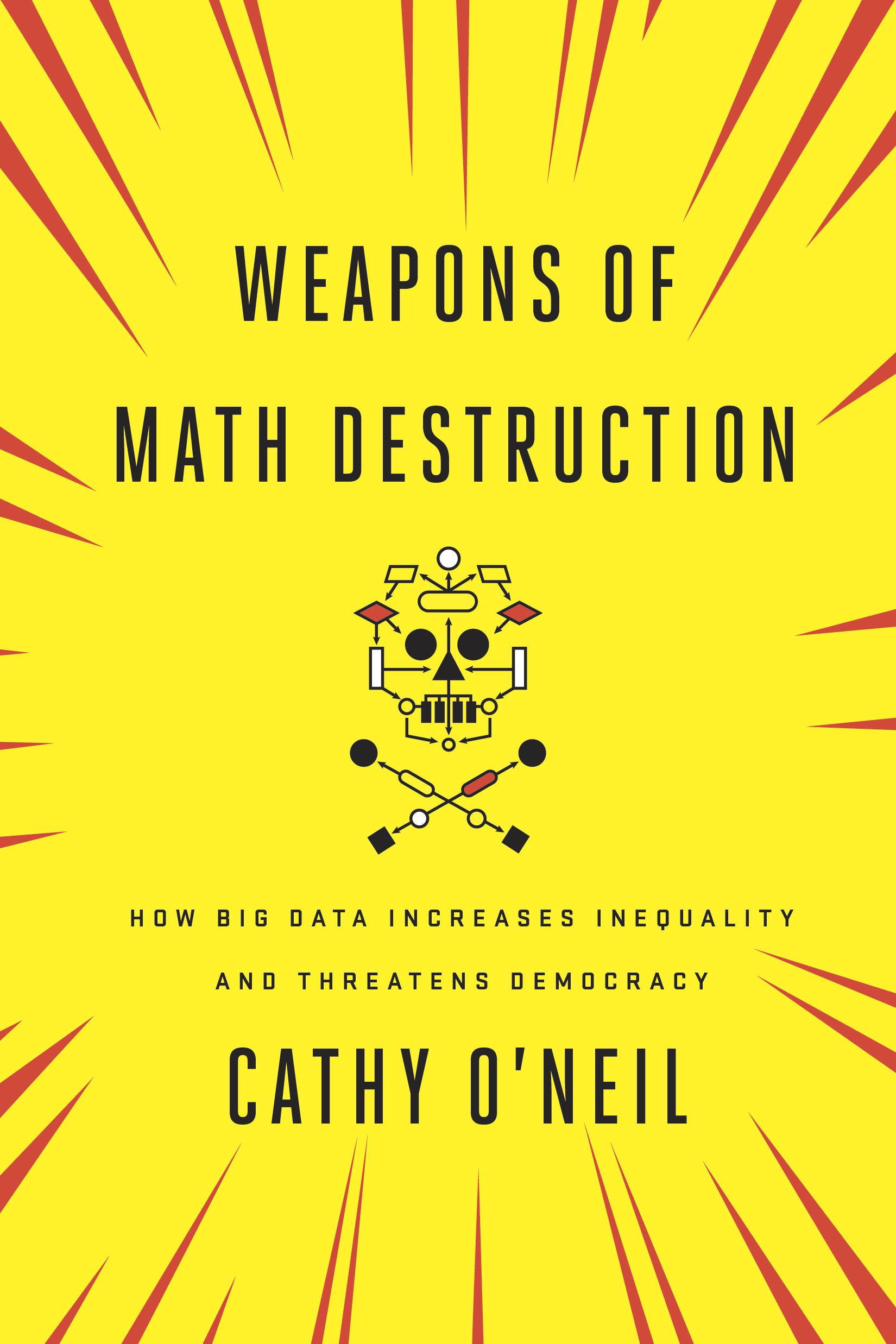
Discussions about big data's role in our society tends to focus on algorithms, but the algorithms for handling giant data sets are all well understood and work well. The real issue isn't algorithms, it's models. Models are what you get when you feed data to an algorithm and ask it to make predictions. As O'Neil puts it, "Models are opinions embedded in mathematics."
O'Neil calls these harmful models "Weapons of Math Destruction," and not all fault models qualify. For a model to be a WMD, it must be opaque to its subjects, harmful to their interests, and grow exponentially to run at huge scale.
These WMDs are now everywhere. The sleazy for-profit educational system has figured out how to use models to identify desperate people and sucker them into signing up for expensive, useless "educations" that are paid for with punitive student loans, backed by the federal government. That's how the University of Phoenix can be so profitable, even after spending upwards of $1B/year on marketing. They've built a WMD that brings students in at a steady clip despite the fact that they spend $2,225/student in marketing and only $892/student on instruction. Meanwhile, the high-efficacy, low-cost community colleges are all but invisible in the glare and roar of the University of Phoenix's marketing blitzkreig.
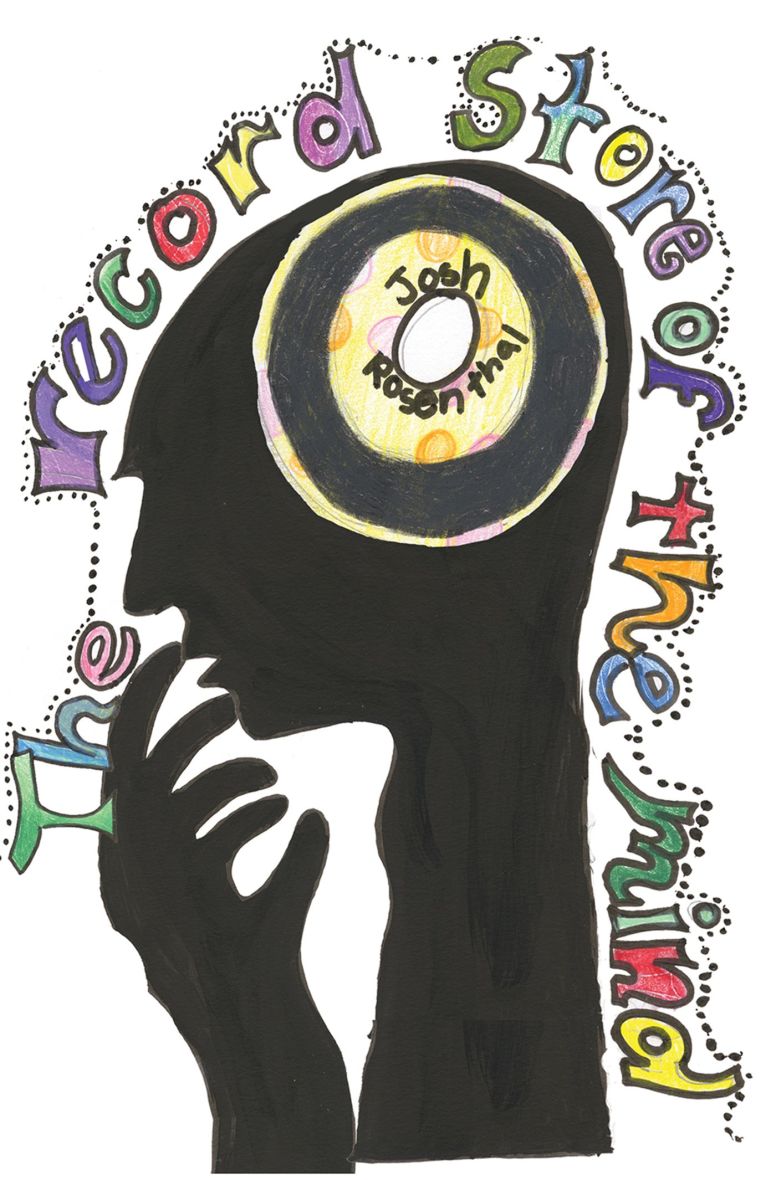 Josh Rosenthal is the cratedigger and DIY musicologist behind such fantastic collections as the Grammy-nominated "He Is My Story: The Sanctified Soul of Arizona Dranes," "Work Hard, Play Hard, Pray Hard : Hard Time, Good Time & End Time Music : 1923-1936," and dozens of other fine releases on his own Tompkins Square Label. Rosenthal recently self-published a combination memoir and musical history, Record Store of the Mind, that tells his own personal story through the lens of the artists he loves and has championed, from 1950s country pioneer Charlie Louvin to Big Star's Alex Chilton to finger-picking folk guitar master John Fahey. It's a wonderful read and a great reminder that no music streaming service could ever replace the magical moment of visiting your local record store and flipping through the bins to uncover the music that moves you.
Josh Rosenthal is the cratedigger and DIY musicologist behind such fantastic collections as the Grammy-nominated "He Is My Story: The Sanctified Soul of Arizona Dranes," "Work Hard, Play Hard, Pray Hard : Hard Time, Good Time & End Time Music : 1923-1936," and dozens of other fine releases on his own Tompkins Square Label. Rosenthal recently self-published a combination memoir and musical history, Record Store of the Mind, that tells his own personal story through the lens of the artists he loves and has championed, from 1950s country pioneer Charlie Louvin to Big Star's Alex Chilton to finger-picking folk guitar master John Fahey. It's a wonderful read and a great reminder that no music streaming service could ever replace the magical moment of visiting your local record store and flipping through the bins to uncover the music that moves you. 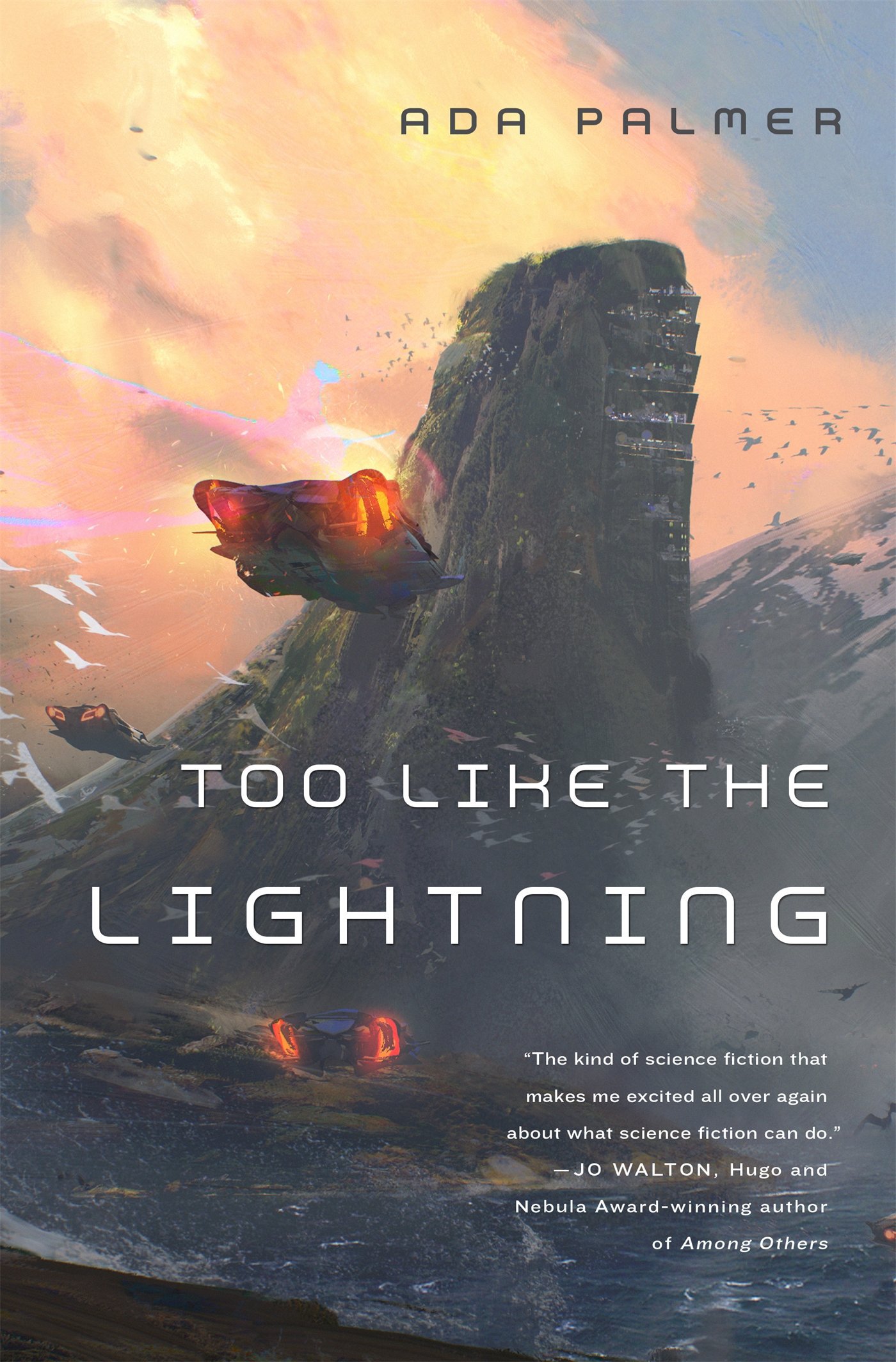 Ada Palmer's 25th century is in the midst of a long and carefully maintained peace, a peace that came only after the Church Wars, when religion nearly destroyed the world. Religions have been abolished, no grouping of more than three people may discuss religious subjects. The advent of ballistic, supersonic flying cars have eliminated space as a constraint on human grouping, all but abolishing nation-states in the process.
Ada Palmer's 25th century is in the midst of a long and carefully maintained peace, a peace that came only after the Church Wars, when religion nearly destroyed the world. Religions have been abolished, no grouping of more than three people may discuss religious subjects. The advent of ballistic, supersonic flying cars have eliminated space as a constraint on human grouping, all but abolishing nation-states in the process.Humans belong to post-geographic affinity groups, some very large (Humanists, Utopians, Mitsubishi, Masons, and more), others much finer-grained: fans of a given sports-team, adherents to a philosophy, members of a trade guild or a hobbyist association. Every person is a minority of one, and majority has been abolished, taking with it the oppression of the many over the few. Even gender has ceased to be a meaningful category, though certain perverts insist on the use of gendered pronouns to describe themselves. Families are gone, replaced by group houses called bash'es, where child-rearing and other familial functions are shared by many adults and their children. Also all but gone is the penal system: instead of sending those who steal and murder to prison, they are turned into work-servants, "Servicers," whom any person may command, and who may only eat food given to them in return for their service.
Mycroft Canner, the book's protagonist and narrator, is one such criminal -- in fact, as we learn, he is a contender for the most notorious criminal of his age, whose brilliance and savagery has made him the confidant of every leader of every strat, and a trusted helper for the most important bash', the elite family who manage the flying cars whose smooth running is critical to the literal survival of 25th century society.
Palmer writes science fiction like a historian, maneuvering vast historical forces deftly, plunging effortlessly into their minutae and detail, zooming out to dizzying heights to show how they all fit together. Her acknowledgements cite Alfred Bester as an influence, and that's no surprise -- few writers can trump Bester for the sense of a world that contains within it all the other worlds of all its inhabitants. Palmer, though, may have exceeded the master.
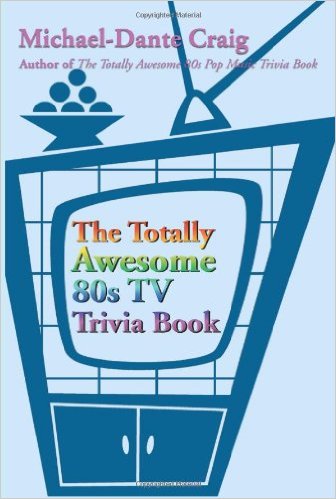 A great way to distract your family from talking about politics this holiday season!
A great way to distract your family from talking about politics this holiday season!
Penny's story -- a novella from the Tor.com imprint -- is set in the last years of the 21st century, just as the very first ageless immortals are approaching their centenary. They are the beneficiaries of a drug that halts aging, a $100/day pill that you need to take every day -- a pill that revolutionizes the relationship of wealthy elites to the world. Once it's clear that the rich can live forever, patent law is immediately amended to provide for eternal royalties to the pharma company behind the drug, and climate change is suddenly a deadly serious business, with no expense spared for remediation. Inheritance laws and the relationship of rich children to their parents become very different indeed, and then there's the rest of us.
What if you don't have $400K/year to spare on anti-aging meds? Well, you could apply for a grant. The smartest scientists, the most successful artists, the people who amuse and assist the hyper-wealthy are all eligible for permanent, endless, lifetime supplies of the drugs. If you don't fit the bill, well, it's a meritocracy, isn't it? Try and raise some kids who amuse and entertain the super-wealthy and maybe they'll bud off a new immortal line. Follow your dreams, kids!
Penny's protagonists are a ragtag group of protesters, anarcho-syndicalist crustypunks who steal anti-aging meds from the rich students and dons of Oxford University and hand them out for free in the slums where the caretakers and janitors and waiters and sex-workers live. Unbeknownst to these resistors, one of their number is actually a police undercover agent, a snitch who's much older than he seems -- thanks to the anti-aging meds he receives as part of his compensation -- and who is sexually involved with one of them, besotted with her, planning to take her with him into a life everafter just before the police sweep in an take the rest of them into custody.
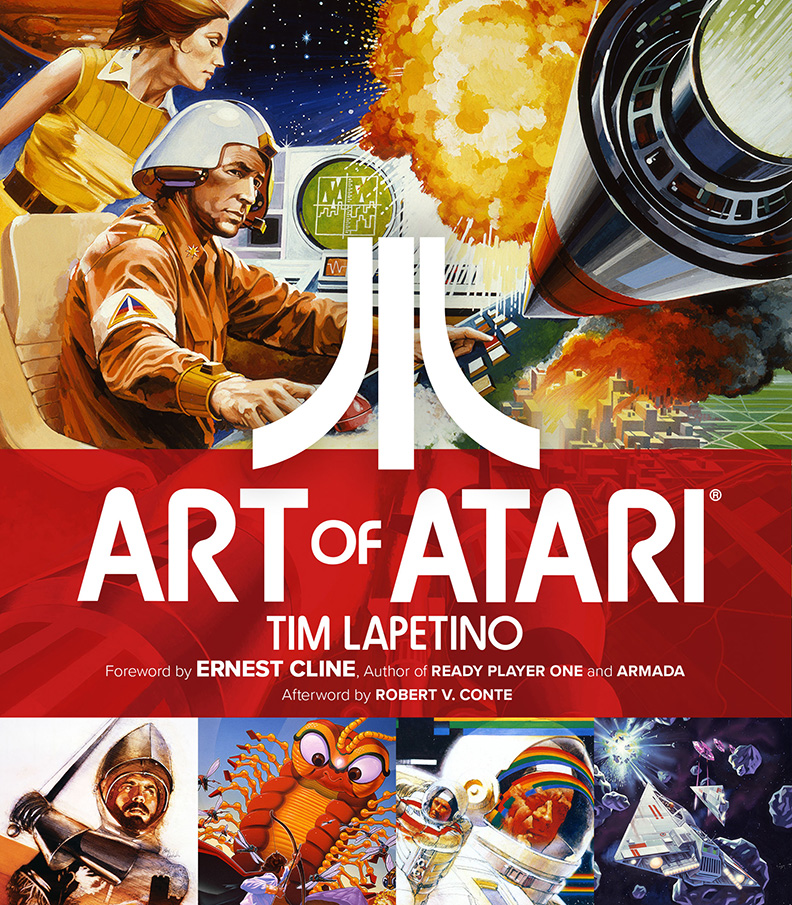 This glorious hardcover celebrates the wonderful illustrations of the iconic videogame company's packaging, catalogs, and other artwork that, according to the book's introduction written by Ernest "Ready Player One" Cline, was "specially commissioned to enhance the Atari experience to further entice children and adults to embrace the new era of electronic entertainment." Speaking from personal experience, it totally worked. By Tim Lapetino.
This glorious hardcover celebrates the wonderful illustrations of the iconic videogame company's packaging, catalogs, and other artwork that, according to the book's introduction written by Ernest "Ready Player One" Cline, was "specially commissioned to enhance the Atari experience to further entice children and adults to embrace the new era of electronic entertainment." Speaking from personal experience, it totally worked. By Tim Lapetino.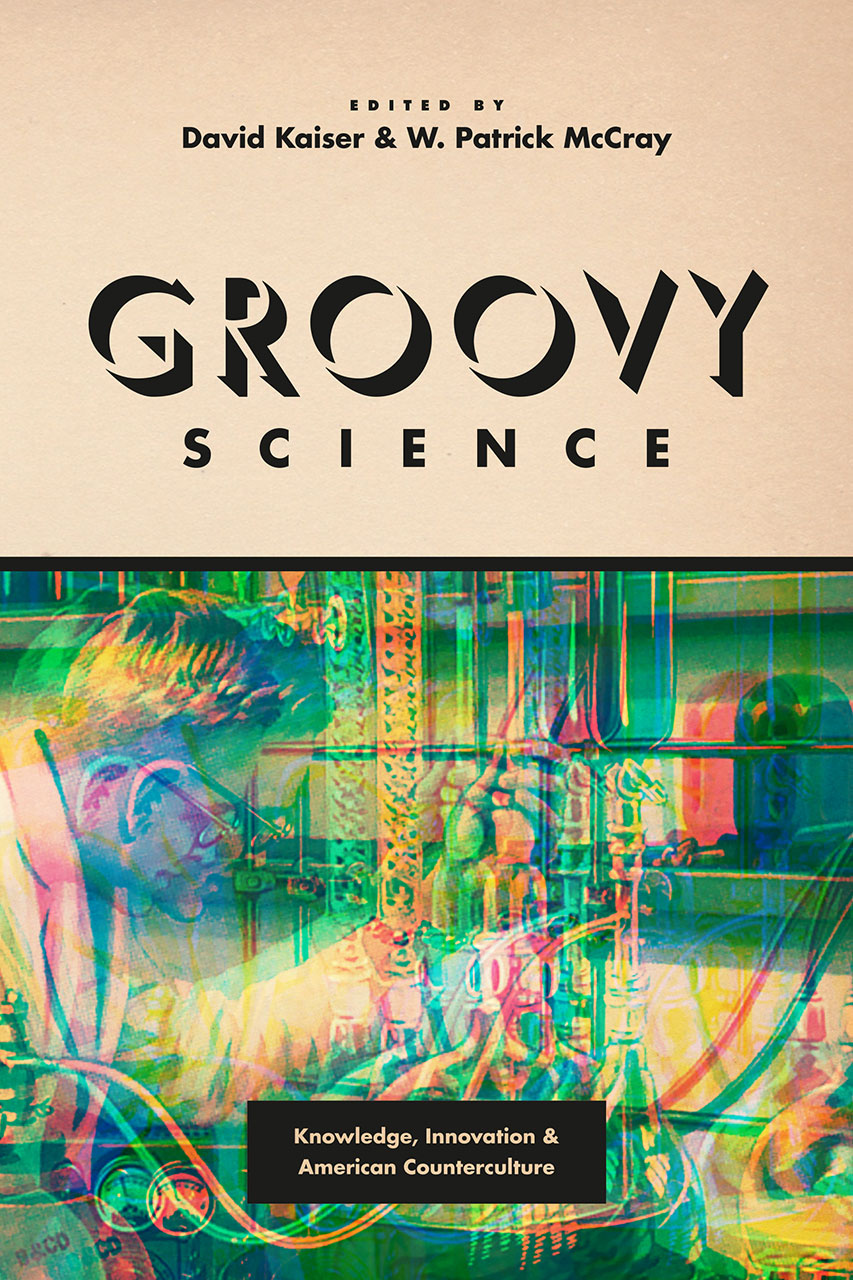 In the late 1960s and 1970s, the mind-expanding modus operandi of the counterculture spread into the realm of science, and shit got wonderfully weird. Neurophysiologist John Lilly tried to talk with dolphins. Physicist Peter Phillips launched a parapsychology lab at Washington University. Princeton physicist Gerard O'Neill became an evangelist for space colonies. Groovy Science: Knowledge, Innovation, and American Counterculture is a new book of essays about this heady time! The book was co-edited by MIT's David Kaiser, who wrote the fantastic 2011 book How the Hippies Saved Physics, and UC Santa Barbara historian W. Patrick McCray.
In the late 1960s and 1970s, the mind-expanding modus operandi of the counterculture spread into the realm of science, and shit got wonderfully weird. Neurophysiologist John Lilly tried to talk with dolphins. Physicist Peter Phillips launched a parapsychology lab at Washington University. Princeton physicist Gerard O'Neill became an evangelist for space colonies. Groovy Science: Knowledge, Innovation, and American Counterculture is a new book of essays about this heady time! The book was co-edited by MIT's David Kaiser, who wrote the fantastic 2011 book How the Hippies Saved Physics, and UC Santa Barbara historian W. Patrick McCray.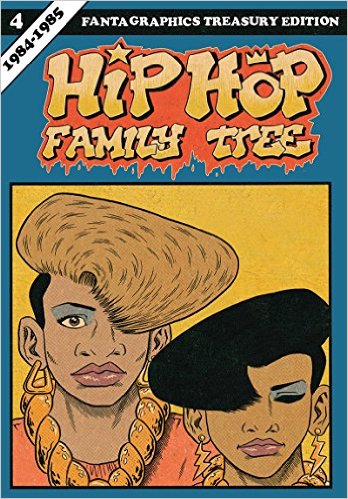 Ed Piskor's comic history of Hip Hop debuted here at Boing Boing, but there's no substitute for print, especially given Fantagraphics' perfect execution of Ed's meticulous, retromaniacal layouts. The latest volume hits the mid-80s and success for Dr. Dre, Salt-N-Pepa and others; the mainstream media takes notice and starts getting thirsty. Ed's storytelling wizardry makes it impossible to stop.
Ed Piskor's comic history of Hip Hop debuted here at Boing Boing, but there's no substitute for print, especially given Fantagraphics' perfect execution of Ed's meticulous, retromaniacal layouts. The latest volume hits the mid-80s and success for Dr. Dre, Salt-N-Pepa and others; the mainstream media takes notice and starts getting thirsty. Ed's storytelling wizardry makes it impossible to stop.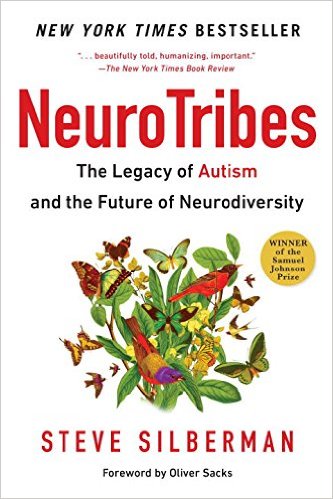 Steve Silberman's definitive book for better understanding autism, and the members of our human family who are different because of it.
Steve Silberman's definitive book for better understanding autism, and the members of our human family who are different because of it. NeuroTribes considers the idea that neurological differences such as autism, dyslexia, and ADHD are not errors of nature or products of the toxic modern world, but the result of natural variations in the human genome. This groundbreaking book will reshape our understanding of the history, meaning, function, and implications of neurodiversity in our world.
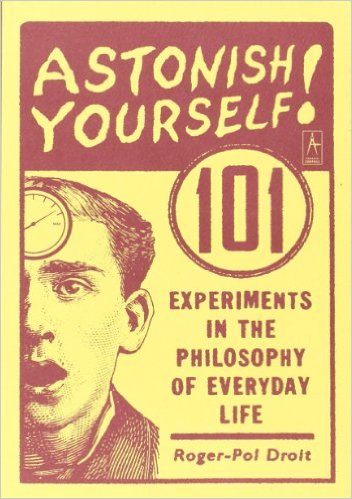 In his introduction, Droit says the purpose of the experiments is to "provoke tiny moments of awareness," and to "shake a certainty we had taken for granted: our own identity, say, or the stability of the outside world, or even the meanings of words." Most of the experiments require about 20 minutes to complete, and often involve nothing more than merely thinking about something.
In his introduction, Droit says the purpose of the experiments is to "provoke tiny moments of awareness," and to "shake a certainty we had taken for granted: our own identity, say, or the stability of the outside world, or even the meanings of words." Most of the experiments require about 20 minutes to complete, and often involve nothing more than merely thinking about something. Some of the experiments you'll probably want to try when you are alone at home (like calling your name repeatedly for 20 minutes, or repeating some other word to drain it of its meaning), but others can be performed anywhere (like imagining that the world was "created from nothing, just an instant ago" and will vanish "like a light going out" in 20 minutes). Some of the experiments you can't really plan in advance; they'll happen by accident, like when you wake up without knowing where you are -- a magical experience I love having, but Droit explains how to make the best use of this five-second-long "delicious lightness of a mystery without menace" the next time it happens: "What you do not know, for a tiny interval of time, is what the place is called, where it is, and you you are doing there.
But you're certain that you are somewhere, and will find out very soon... try not to lose hold of this rare moment of perfect suspension between doubt and confidence, certitude and ignorance, anxiety and satisfaction." One of the things I've learned from doing just a few of the exercises in this book is how hard it to stop being so busy and slow down enough to do the experiments. I don't want to stop sitting in front of my computer, playing games, reading a book, tending to chickens, tidying the house, or a million other things that tug at me, but a few minutes after getting started with one of Droit's exercises, I feel good about taking a break from those habitual behaviors. BUY
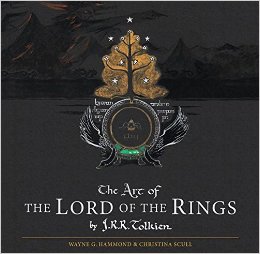 These are the drawings, maps, diagrams, and sketches that Tolkien drew to help him navigate Middle-earth, and the entire complex universe he created for his novels. Edited by Tolkien scholars Wayne G. Hammond and Christina Scull, the hardcover book contains nearly 200 images, the majority of which have never been published before. According to the editors, the Inscriptions in runes and Elvish script, and facsimile leaves from the burned and blood-stained Book of Mazarbul, support Tolkiens pose as an editor or translator of ancient records. So, the map is the territory after all.
These are the drawings, maps, diagrams, and sketches that Tolkien drew to help him navigate Middle-earth, and the entire complex universe he created for his novels. Edited by Tolkien scholars Wayne G. Hammond and Christina Scull, the hardcover book contains nearly 200 images, the majority of which have never been published before. According to the editors, the Inscriptions in runes and Elvish script, and facsimile leaves from the burned and blood-stained Book of Mazarbul, support Tolkiens pose as an editor or translator of ancient records. So, the map is the territory after all.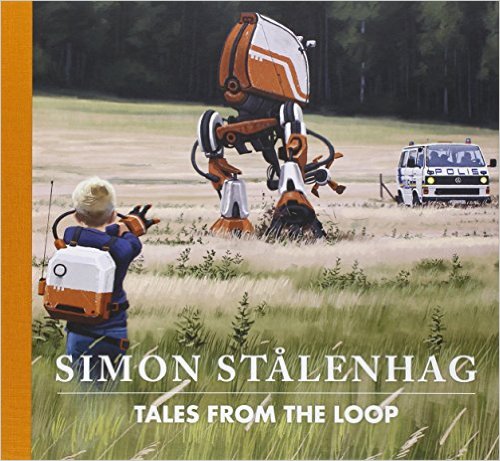 Simon Stlenhags paintings are nostalgic yet unsettling, depicting futuristic technology looming over rural landscapes at some indistinct moment in the latter half of the twentieth century. Though superficially technical and straightforward, his style grows in atmosphere and depth the more you look at it; like a set of paded polaroids found in an old drawer, they expose a haunting sense of humanity and technological chaos.
Simon Stlenhags paintings are nostalgic yet unsettling, depicting futuristic technology looming over rural landscapes at some indistinct moment in the latter half of the twentieth century. Though superficially technical and straightforward, his style grows in atmosphere and depth the more you look at it; like a set of paded polaroids found in an old drawer, they expose a haunting sense of humanity and technological chaos.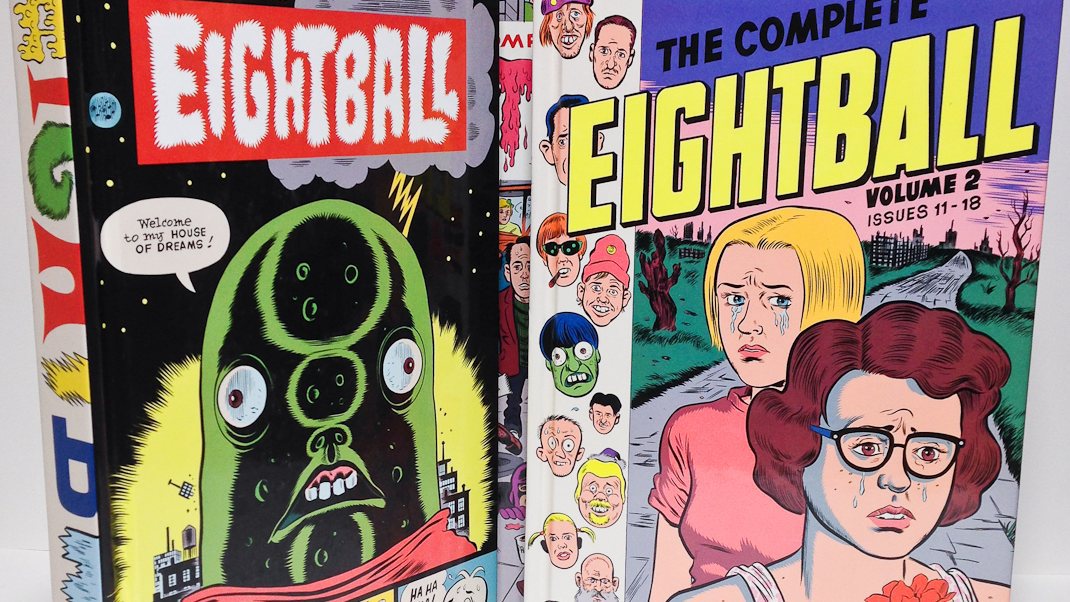 Of all the great comics from the late 1980s and early 1990s -- Love and Rockets, Weirdo, Hate, Acme Novelty Library, Optic Nerve, The Rocketeer -- my favorite is Daniel Clowes' Eightball. Each issue included one chapter of a serious graphic-novel-length story, and several pages of misanthropic, funny, bizarrely imaginative shorter comics. I loved both sections. One of long stories in Eightball ("Ghost World") and one of the shorter pieces ("Art School Confidential") were turned into movies, with Clowes writing the screenplays for both. To celebrate the 25th anniversary of Eightball Fantagraphics released a slipcase 2-volume facsimile edition of Eightball that includes the first 18 issues of the comic book. It's stunningly gorgeous, and Fantagraphics went all out to create a package that will please people like me who read Eightball in its single issue format as well as people who are new to his early work.
Of all the great comics from the late 1980s and early 1990s -- Love and Rockets, Weirdo, Hate, Acme Novelty Library, Optic Nerve, The Rocketeer -- my favorite is Daniel Clowes' Eightball. Each issue included one chapter of a serious graphic-novel-length story, and several pages of misanthropic, funny, bizarrely imaginative shorter comics. I loved both sections. One of long stories in Eightball ("Ghost World") and one of the shorter pieces ("Art School Confidential") were turned into movies, with Clowes writing the screenplays for both. To celebrate the 25th anniversary of Eightball Fantagraphics released a slipcase 2-volume facsimile edition of Eightball that includes the first 18 issues of the comic book. It's stunningly gorgeous, and Fantagraphics went all out to create a package that will please people like me who read Eightball in its single issue format as well as people who are new to his early work.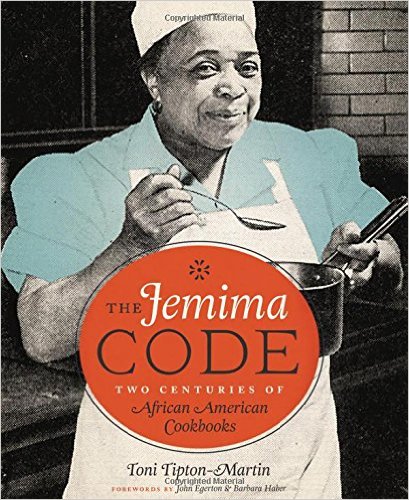 To discover the true role of black women in the creation of American, and especially southern, cuisine, Toni Tipton-Martin has spent years amassing one of the worlds largest private collections of cookbooks published by African American authors, looking for evidence of their impact on American food, families, and communities and for ways we might use that knowledge to inspire community wellness of every kind.
To discover the true role of black women in the creation of American, and especially southern, cuisine, Toni Tipton-Martin has spent years amassing one of the worlds largest private collections of cookbooks published by African American authors, looking for evidence of their impact on American food, families, and communities and for ways we might use that knowledge to inspire community wellness of every kind.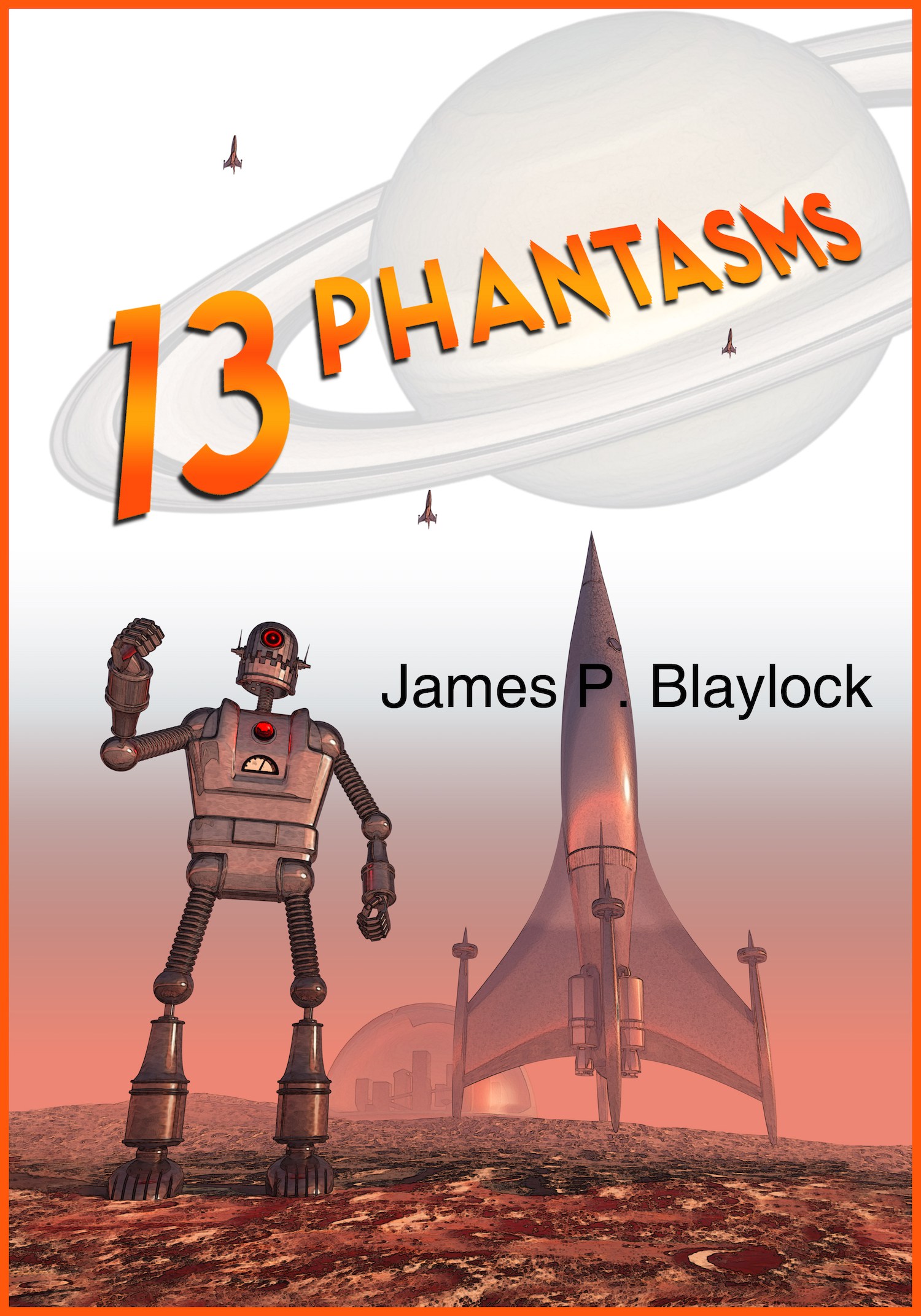 I love reading James Blaylock's novels. His take on humanity, and the super natural, always thrill me. This collection of short stories made my rainy weekend. This collection of 16 stories is wonderful. Blaylock often tells tales where hope is covered in a dark sheen of barely contained evil, hiding in everyday California. I'm addicted! Included in this, his only collection of shorts, is Blaylock's award winning 13 Phantasms, the story of a man who follows an ad back into the golden age of science fiction. Steampunk, classic sci-fi, and a few new Langdon St. Ives adventures (one of Blaylock's best known characters,) are gripping!
I love reading James Blaylock's novels. His take on humanity, and the super natural, always thrill me. This collection of short stories made my rainy weekend. This collection of 16 stories is wonderful. Blaylock often tells tales where hope is covered in a dark sheen of barely contained evil, hiding in everyday California. I'm addicted! Included in this, his only collection of shorts, is Blaylock's award winning 13 Phantasms, the story of a man who follows an ad back into the golden age of science fiction. Steampunk, classic sci-fi, and a few new Langdon St. Ives adventures (one of Blaylock's best known characters,) are gripping! Written by Franz Xaver von Schonwerth in the 19th century and edited by Erika Eichenseer in the 21st century, this body of fairy tales surfaced only recently and can be encounted free of the Hollywood trappings that have long veiled more familiar folk stories. Fascinating, florid and "grimmer than Grimm," this book is a thoroughly Germanic fantasy landscape and far more entertaining than you probably expect it to be.
Written by Franz Xaver von Schonwerth in the 19th century and edited by Erika Eichenseer in the 21st century, this body of fairy tales surfaced only recently and can be encounted free of the Hollywood trappings that have long veiled more familiar folk stories. Fascinating, florid and "grimmer than Grimm," this book is a thoroughly Germanic fantasy landscape and far more entertaining than you probably expect it to be. Original Link: http://feeds.boingboing.net/~r/boingboing/iBag/~3/sbFVTRM_oWE/boing-boings-2016-book-guide.html


